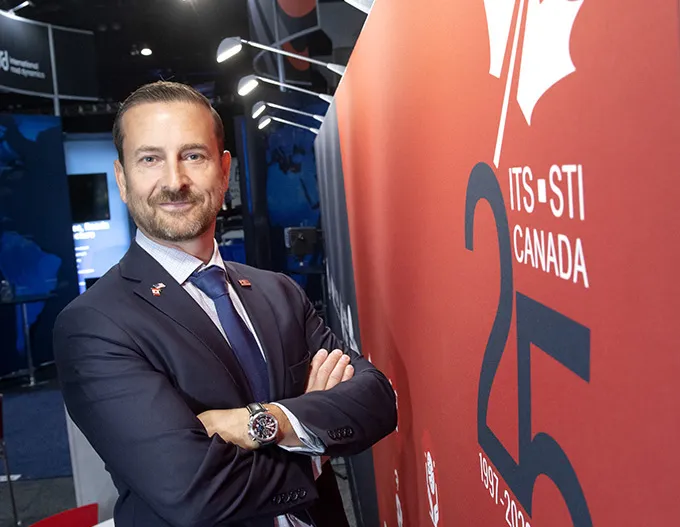In February, ITS International learned that Gatso had just begun secret trials in the US of a new camera system. From a photograph, the radical modern new design of the cabinet suggested that the interior components were likely to have been upgraded. When Timo Gatsonides, managing director of the company, agreed to an exclusive interview with news editor James Foster about what we had seen, that upgrade assumption proved to be an understatement. The Gatso T-series platform, which will be unveiled to the wo
June 19, 2012
Read time: 3 mins
In February, 1846 ITS International learned that 1679 Gatso had just begun secret trials in the US of a new camera system. From a photograph, the radical modern new design of the
cabinet suggested that the interior components were likely to have been upgraded. When Timo Gatsonides, managing director of the company, agreed to an exclusive interview
with news editor James Foster about what we had seen, that upgrade assumption proved to be an understatement.
The Gatso T-series platform, which will be unveiled to the world at Intertraffic Amsterdam 2012 at the end of March, is not just a completely new design of technology and components in a radical new cabinet. It was born out of a totally new vision for the present and future needs of the enforcement sector that Gatso created when it introduced the world’s first speed camera in 1964.
It would be fair, if a slight over simplification, to say that, the company has traditionally focused on the technology side of its products and ensuring, for instance, the integrity of the evidence produced. That is still very much the case, Gatsonides says. For instance, at the heart of the T-series platform is the compact Gatso GT20 camera, exclusively designed by the company (see page 66).
“In addition to the technical aspects, with the T-series we have also specifically focused on wider, and equally important, aspects. Ease of installation and maintenance and improved violation efficiency. We’ve concentrated on providing the lowest cost of ownership and maximising the return on investment, which are becoming much more important. Future proofing and making the platform extensible,” Gatsonides said. Asked to quantify future proofing, Gatsonides revealed that the T-series platform has the built-in technological capability to provide much more than traditional speed and red light enforcement functions. This includes things like amber alerts, flagging up black list or suspect vehicles for wider crime prevention or producing statistics – a full range of additional functions based on ANPR.
“Based on what we set out to achieve when we first began work on this new platform, the pilot trial is already proving that we have unveiled a new era in traffic camera systems,” Gatsonides states. “So we are keen to show the world our new vision for this industry during70 Intertraffic.
cabinet suggested that the interior components were likely to have been upgraded. When Timo Gatsonides, managing director of the company, agreed to an exclusive interview
with news editor James Foster about what we had seen, that upgrade assumption proved to be an understatement.
The Gatso T-series platform, which will be unveiled to the world at Intertraffic Amsterdam 2012 at the end of March, is not just a completely new design of technology and components in a radical new cabinet. It was born out of a totally new vision for the present and future needs of the enforcement sector that Gatso created when it introduced the world’s first speed camera in 1964.
It would be fair, if a slight over simplification, to say that, the company has traditionally focused on the technology side of its products and ensuring, for instance, the integrity of the evidence produced. That is still very much the case, Gatsonides says. For instance, at the heart of the T-series platform is the compact Gatso GT20 camera, exclusively designed by the company (see page 66).
“In addition to the technical aspects, with the T-series we have also specifically focused on wider, and equally important, aspects. Ease of installation and maintenance and improved violation efficiency. We’ve concentrated on providing the lowest cost of ownership and maximising the return on investment, which are becoming much more important. Future proofing and making the platform extensible,” Gatsonides said. Asked to quantify future proofing, Gatsonides revealed that the T-series platform has the built-in technological capability to provide much more than traditional speed and red light enforcement functions. This includes things like amber alerts, flagging up black list or suspect vehicles for wider crime prevention or producing statistics – a full range of additional functions based on ANPR.
“Based on what we set out to achieve when we first began work on this new platform, the pilot trial is already proving that we have unveiled a new era in traffic camera systems,” Gatsonides states. “So we are keen to show the world our new vision for this industry during










